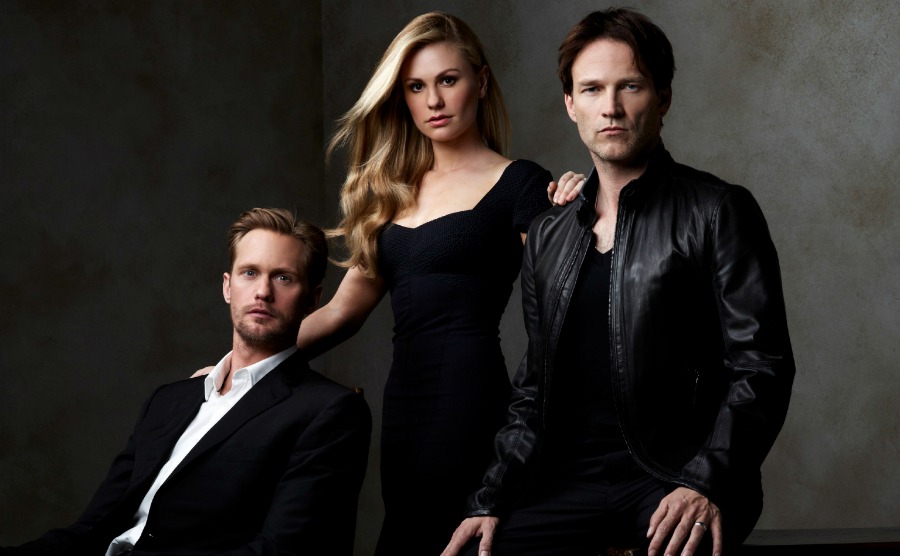Maenads
The god of wine, Dionysus or Bacchus, enjoyed beauty, order, joy and celebration. They could also be the bringers of chaos, war and bloodshed. They maenads are an example. Maenads were the female followers of Dionysus, the most significant members of the Thiasus, the retinue of Dionysus. Their name literally translates as “raving ones”. Often the maenads were portrayed as inspired by him into a state of ecstatic frenzy, through a combination of dancing and drunken intoxication. In this state, they would lose all self control, begin shouting excitedly, engage in uncontrolled sexual behavior, and ritualistically hunt down and tear animals (and sometimes men and children) to pieces, devouring the raw flesh. During these rites, the maenads would dress in fawn skins and carry a thyrsus, a long stick wrapped in ivy or vine leaves and tipped by a cluster of leaves, weave ivy-wreaths around their heads, and often handle or wear snakes.
Maenads, also known as Bacchantes, were beautiful women who loved wine and dance and song and they loved and served their god, Dionysus. Who wouldn’t want to serve the beautiful and lusty god? But they had one problem: drinking wine and celebration made them mad, insane and full of bloodlust.
Dionysus represents these two absolutes. This was one reason why he was associated with wine. Wine intoxication (alcohol, or any substance in general, really), has one of two effects. In small doses, with moderate use, you have a spanking good time. Enjoyable and positive, joyous and merry. Yet when you are smashed, there is an opportunity for our carnal natures to come out, partaking of violence and sex in excess.
Maenads would travel over the mountains and the forests, savage and wild and capture and kill anything in their path and eat the bloody shreds in a frenzy greater than any wild animal. According to Homer, the blind singer:
Oh sweet upon the mountain
The dancing and the singing
The maddening rushing flight
Oh sweet to sink to earth outworn
When the wild goat has been hunted and caught
Oh the joy of the blood and the raw red flesh
Their legend made them something of a demi-god, not quite divine, but worthy of sacrifice and tribute. While the gods were interested in order and beauty in their temples, the maenad had no temples but they did have the forests. Anyone wishing to make a gift to the maenad would take the gift to any meadow or small clearing in the woods and stake live animals, especially deer or goats, in an obvious spot along with wine and other precious edibles. This sometimes included virgin boys and girls and drugged warriors.
The activity of the maenads seem to relate to the religion of the Minoan culture. It may be that they have their origin as priestesses of that culture. The art of that culture has been shown to demonstrate a concern for the continuity of life. The rending of animals is an expression of that continuity. It was believed that the rending released the life force of the animal in a way that allowed it to be absorbed by the worshiper when the raw flesh of the victim was eaten by the worshipper. Dionysus can be identified with the bull of Minoan religion and the Minotaur of Greek Myth. A consistent interpretation of the Minotaur myth is that he rent his victims when he devoured them. The maenads can be related to priestesses who danced before the victims in a way that would excite the bull to rend them by goring and tossing them. The bull was then, himself sacrificed by the priestesses in an attempt to bring the life force of the bull upon them. It should be noted that bulls are much more capable of rending their victims than maenads would be.
Between frenzies, the god Dionysus would care for the maenad and set up forest shelters for them to rest and bathe and eat and frolic. He would also meet the forest women to make love, as Dionysus was a lusty god. But after they were rested and sexually fulfilled, the maenads would begin their worship and drink heavily of wine and go out a hunting again.
Daphne says that Maryann is a maenad, but that she is much more than that. That is because maenads were anointed to be the primary wielders of this arcane knowledge of balance about the universe, and that is why they were the priestesses of Dionysus. They inspired both the “good” and the “bad” in people, all in the name of Dionysus, The Green Man, The Horned God.
We can see this in Maryann. She clearly has two sides to her. She clearly is attempting to inspire goodness in people, all the while also having them confront the full reality of their human existence. In the context of the show, this obviously will fuel many of the themes surrounding good/evil, life/death/rebirth and so forth. I feel that the Maryann storyline is meant to be a hub of symbolic meaning of the show. Maryann also relates well to the mythical goddess Circe (nymph, witch, enchantress) who lived in a mansion, drugged her victims (Odysseus’s crew) with food laced with magical potions then turned them to pigs.
Sources: Mythology: Timeless Tales of the Gods and Heroes by Edith Hamilton and The Giant Book of Greek and Roman Divinities by Cassandra Eason, Mythology, Edith Hamilton, Greek Theatre Performance: An Introduction by David Wiles, Intoxication in Mythology: A Worldwide Dictionary of Gods, Rites, Intoxicants,and Place by Ernest L. Abel, Circe, Maenads, Women Followers of Dionysus
Additional research by Mike Crowley, Muvee Junkee, and Cevin.






10 Comments